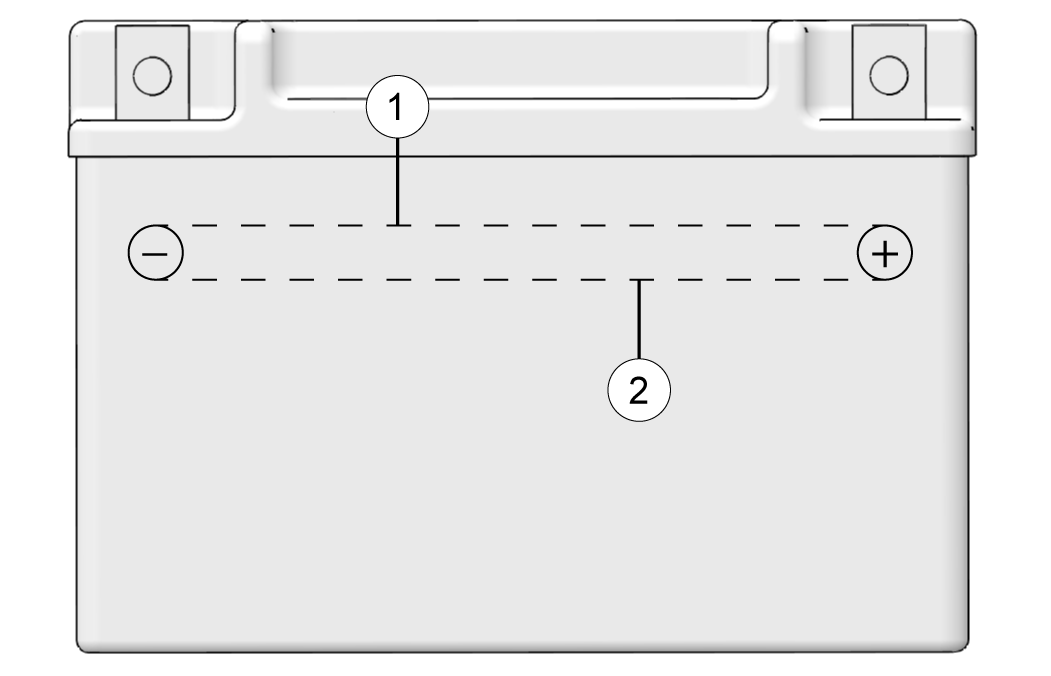
Content Source: 2020 RANGER XP 1000 Tractor Owner’s Manual (9930868 R02) > Maintenance Chapter
| IMPORTANT |
|
The Owner's Manual for this vehicle contains warnings, instructions and other information you must read and fully understand before safely riding or performing maintenance on this vehicle.Always follow the warnings and instructions in Owner's Manual. Click the CONTENTS link above for the Table Of Contents, or download a full PDF of the Owner Manual in the Owner Support area of Polaris.com |
|
Battery electrolyte is poisonous. It contains sulfuric
acid. Serious burns can result from contact with skin, eyes or clothing.
Antidote:
External:
Flush with water.
Internal: Drink
large quantities of water or milk. Follow with milk of magnesia, beaten
egg, or vegetable oil. Call physician immediately.
Eyes: Flush
with water for 15 minutes and get prompt medical attention.
Batteries produce explosive gases. Keep sparks, flame,
cigarettes, etc. away. Ventilate when charging or using in an enclosed
space. Always shield eyes
when working near batteries. KEEP OUT OF REACH OF CHILDREN.
|
|
Improperly connecting or disconnecting battery cables
can result in an explosion and cause serious injury or death. When
removing
the battery, always disconnect
the negative (black) cable first. When reinstalling the battery, always
connect the negative
(black) cable last.
|

| Improperly connecting or disconnecting battery cables can result in an explosion and cause serious injury or death. When removing the battery, always disconnect the negative (black) cable first. When reinstalling the battery, always connect the negative (black) cable last. |
| NOTICE |
| If electrolyte spills, immediately wash it off with a solution of one tablespoon baking soda and one cup water to prevent damage to the vehicle. |
|
Battery gases could accumulate in an improperly installed vent tube and cause an explosion, resulting in serious injury or death. Always ensure that the vent tube is free of obstructions and is securely installed as recommended. |
| TIP |
|
Battery charge can be maintained by using a POLARIS Battery
Tender charger or by charging about once a month to make up for
normal self discharge.
Battery Tender can be left connected during the storage period, and
will automatically charge the battery
if the voltage drops
below a predetermined point.
|
|
An overheated battery may explode, causing severe injury
or death. Always watch charging times carefully. Stop charging if
the battery becomes very
warm to the touch. Allow it to cool before resuming charging.
|
| TIP |
|
When using an automatic charger, refer to the charger
manufacturer's instructions for recharging. When using a constant
current
charger, use the guidelines
below for recharging.
|
| State of Charge | Voltage | Action | Charge Time* |
|---|---|---|---|
| 100% | 12.8-13.0 volts | None, check at 3 mos. from date of manufacture | None required |
| 75%-100% | 12.5-12.8 volts | May need slight charge, if no charge given, check in 3 months | 3-6 hours |
| 50%-75% | 12.0-12.5 volts | Needs charge | 5-11 hours |
| 25%-50% | 11.5-12.0 volts | Needs charge | At least 13 hours, verify state of charge |
| 0%-25% | 11.5 volts or less | Needs charge with desulfating charger | At least 20 hours |
| *(Using constant current charger @ standard amps specified on top of battery) | |||
© Copyright Polaris Industries Inc. All rights reserved.